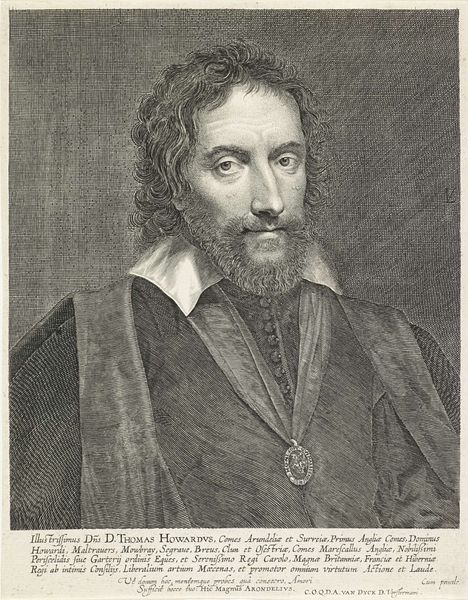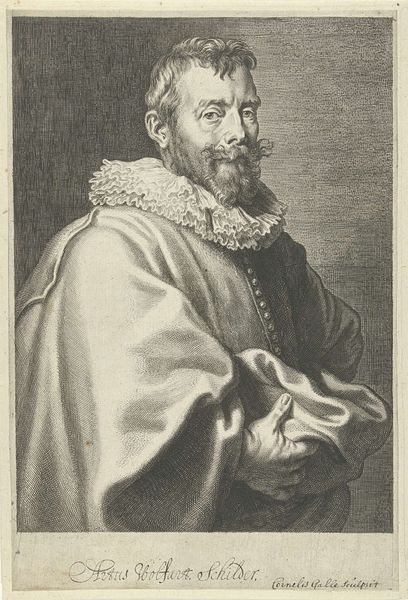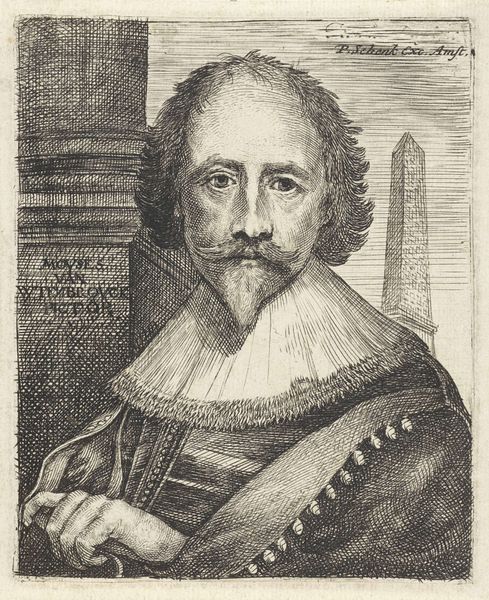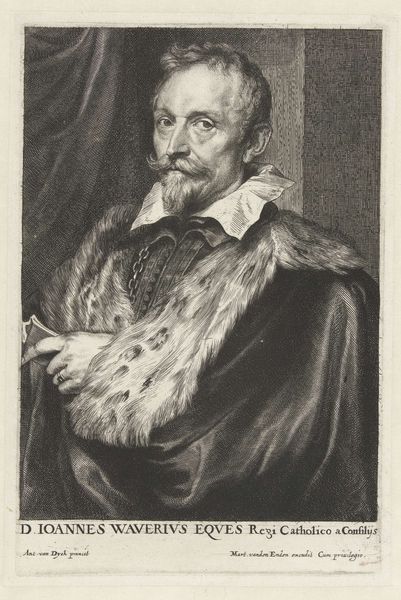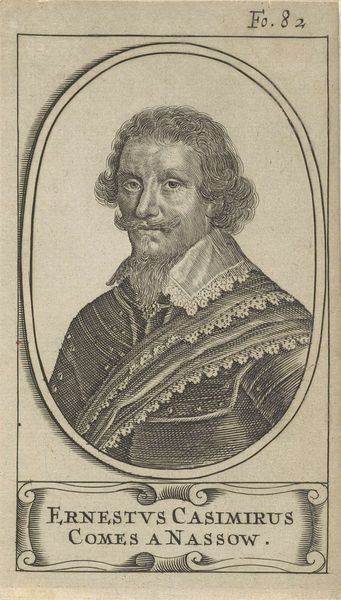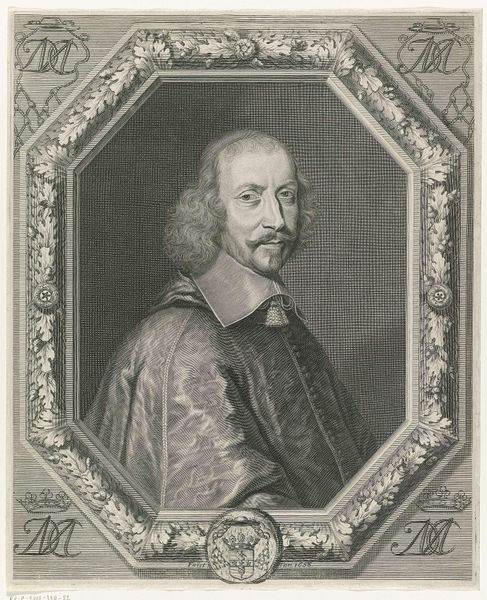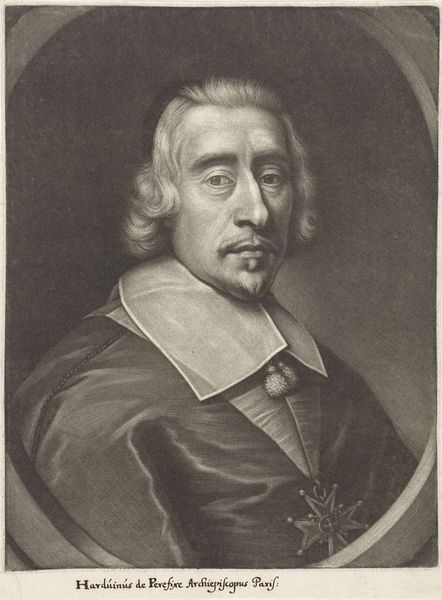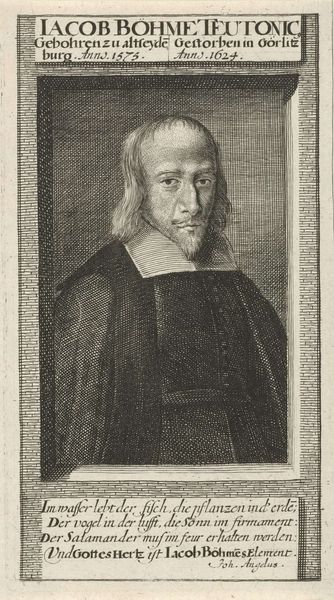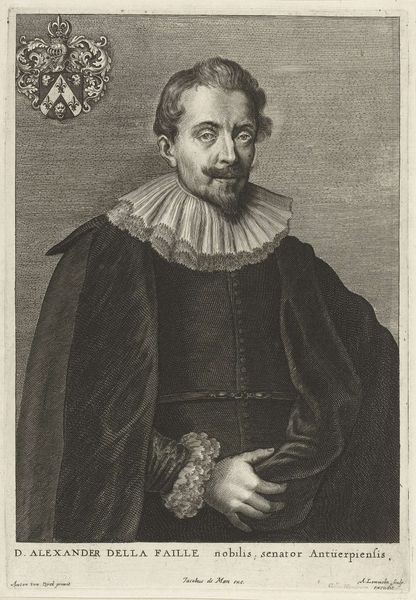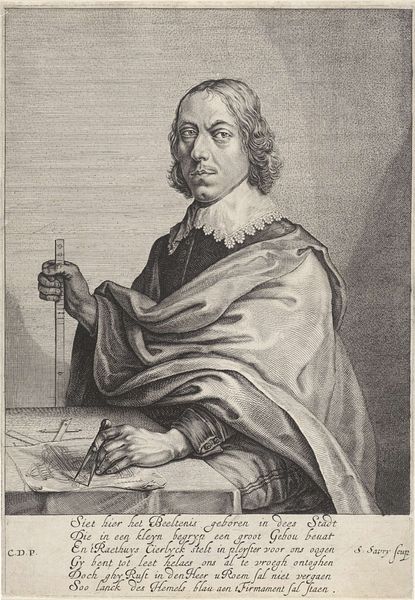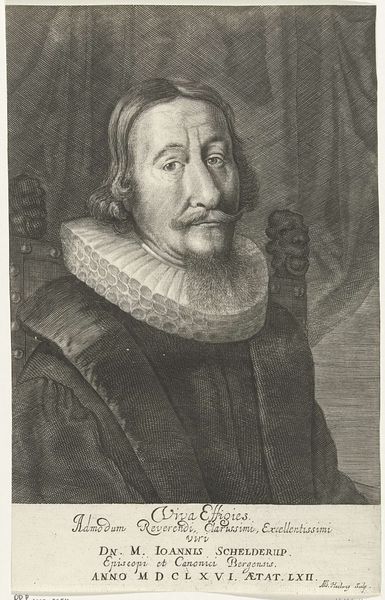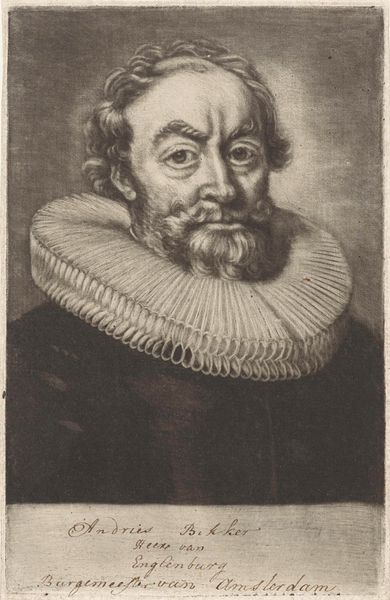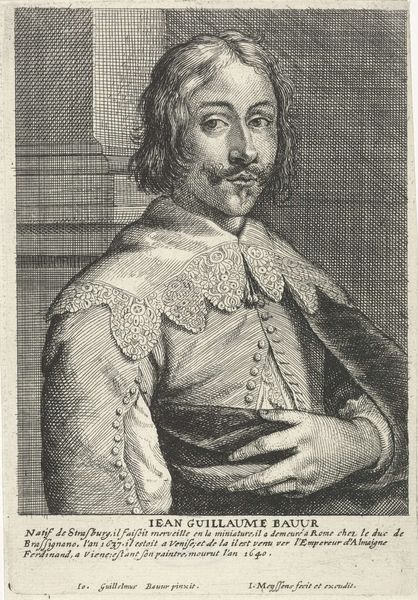
print, engraving
#
portrait
#
baroque
# print
#
engraving
Dimensions: height 165 mm, width 117 mm
Copyright: Rijks Museum: Open Domain
Curator: This engraving, dating back to 1649, is titled “Portret van de schilder Petrus Paulus Rubens”, or "Portrait of the painter Peter Paul Rubens." It currently resides in the Rijksmuseum. Editor: My first impression is its formality and the dense detail for an engraving. The subject projects a real sense of gravity and confidence, doesn't he? Curator: Indeed. Consider Rubens's position within the aristocracy; he’s been made a knight. This image then functions as a powerful declaration of his status and influence within both the artistic and political spheres of 17th-century Europe. Editor: It also points to the material conditions that fostered such mobility. Printmaking played a critical role in disseminating images and ideas across geographic and social boundaries. An engraving such as this speaks to the networks of patronage and production required for its creation and distribution. The fine lines required skill but also access to equipment. Curator: Precisely. And the inclusion of Latin text reinforces this notion of elevated social standing and academic engagement, signaling his connections with intellectual elites of the period. It shows Rubens aware of how he could shape public perceptions. Editor: Yes, this image actively builds a brand. Also the baroque aesthetic, seen through the dynamism and drama achieved in the shading from what must have been considerable manual effort, signifies abundance and power—both features actively marketed here. I think it tells an interesting story of the art market as well. Curator: Absolutely. Considering its display at the Rijksmuseum now, what narrative of cultural and national identity does this portrait contribute to? What aspects of artistic legacy are celebrated and canonized through the continued exhibition? Editor: From a production point of view, this image’s survival as a print also marks it as an object that's proven desirable; people keep pulling and collecting it because there's an ongoing market for what it represents and materially offers, its details are crisp still and we know the tools and supplies that made it continue to be of use. Curator: Seeing the subject positioned centrally against the dark background makes us think of his role during a period of religious, political and societal unrest in the Dutch Republic. It prompts discussion regarding artistic license in promoting cultural ideas. Editor: Overall, I see this image of Rubens through the technologies and class dynamics required for it to be made, circulated, collected, and ultimately appreciated today. Curator: And I see the layered meanings embedded, from personal promotion to cultural identity—this print indeed captures complex negotiations.
Comments
No comments
Be the first to comment and join the conversation on the ultimate creative platform.
